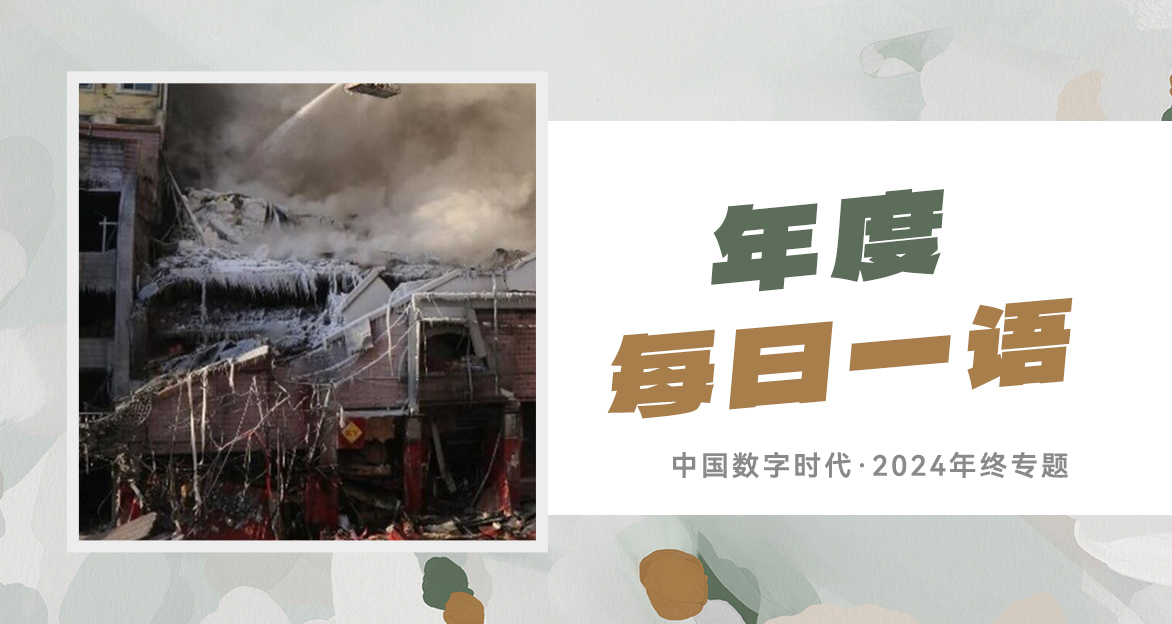
苏联帝国的野心如何孕育了自身毁灭的种子
《铁幕:1944年-1956年的东欧惨剧》作者:安妮·爱普尔鲍姆; 英国版由 Allen Lane出版社出版,美国版由Doubleday出版社出版。
IN THE spring of 1945 the Polish city of Lodz was swamped with refugees. Local women organised themselves to help. Opening a shelter at the city railway station, they called themselves the Women’s League. Five years later the league had been transformed. It had a central office in Warsaw, which controlled its regional offices, and its goals were to “raise the level of women’s social consciousness” and to mobilise them “to the most complete realisation of the goals of the Six-Year Plan”. It had become, in other words, the women’s section of the Polish Communist Party. All over central Europe fledgling elements of civil society—clubs, associations, schools and churches—were thus co-opted into new, Soviet-occupied communist states. How did this happen, and why did the Soviet Union’s attempt to impose totalitarianism on its new empire ultimately fail? These are the questions that lie at the core of Anne Applebaum’s illuminating new book.
1945年春天,波兰的罗兹市涌进大批难民。当地妇女自发地组织起来帮助难民,她们在火车站设立了一处避难所,自称为“妇女联合会”。5年后,这个联合会的性质发生了转变。联合会在首都华沙设立了中央机构,负责管理地方组织,联合会的目标是“提升妇女的社会意识水准”,并将她们动员起来“最终实现六年计划的目标”。简言之,联合会蜕变为波兰共产党的妇女分部。在中欧各国刚刚出现的公民社会萌芽——各类俱乐部,协会,学校和教会组织——就这样被强制转新型为由苏联控制下的共产主义国家。这是一个怎样的过程?为什么苏联对新帝国施加集权主义的企图会最终失败?这些问题正是安妮·爱普尔鲍姆在新书中所阐释的核心内容。
Though from the outset, central Europeans suffered arbitrary expropriations and arrests, initially the Soviet authorities sought to create the semblance of national independence and political pluralism. Local communist parties ruled in notional coalitions. National symbols were reinstated. In Berlin, the future spymaster Markus Wolf hosted a radio programme entitled “You Ask, We Answer”, which as well as praising Russian communism, answered listeners’ queries on vegetable supplies and the reopening of the Berlin zoo.
虽然中欧各国人民在开始时经历了强制罚没和逮捕的磨难,但是苏联当局的初始目的是试图营造出国家独立和政治多元化的表象。各国的共产党以联合执政的名义进行统治,民族的象征被重新启用。在柏林,未来的间谍头子马库斯·沃尔夫主持了一档名为“你提问,我回答”的电台节目,这档节目一边为俄国的共产主义唱赞歌,一边回答听众对蔬菜供应和重开柏林动物园的提问。
The mask dropped with the first post-war elections. These were held, Ms Applebaum stresses, because central Europe’s “little Stalins” sincerely believed they would win. In the event, in Hungary’s national elections of November 1945, the communists took just 17% of the vote, and in January 1947 the Polish Peasants’ Party, led by a former member of General Wladyslaw Sikorksi’s government-in-exile, won a parliamentary election so thoroughly, despite violent intimidation, that the results had brazenly to be falsified. Nowhere were the real victors allowed to take power, and opposition leaders were subsequently arrested or fled into exile.
在战后的第一次选举中,这个面具掉到了地上。爱普尔鲍姆女士在书中强调说,之所以举行这些选举,是因为中欧各国的“小斯大林们”发自内心地相信,他们会在选举中获胜。在1945年9月举行的匈牙利全国选举中,共产党只获得了17%的选票;在瓦迪斯瓦夫·西科尔斯基将军流亡政府的一名前官员的领导下,波兰农民党在议会选举中获得了压倒性的胜利。在所有这些事件中,除了使用武力恫吓之外,选举的结果都被厚颜无耻地篡改了。真正的胜者不被承认,随后,反对派领袖不是遭逮捕就是流亡国外。
The solution to this, Moscow believed, was not less communism but more. Central Europeans, like Russians, could be moulded into Homo sovieticus: conformist, optimistic, hard-working and socially conscious. Across the block, schoolchildren, like their Russian counterparts before them, started learning ditties in praise of Stalin. In factories, workers competed to become Stakhanovite “shockworkers”. Writers and artists, lured home by promises of fat commissions and vast print runs, found themselves turning out unreadable novels and Socialist Realist murals.
莫斯科相信,解决问题的办法不是减少共产主义的教育,而是应该施加更多的共产主义教育。他们相信,如同俄罗斯人那样,中欧各国的人们也可以被塑造成“苏维埃人种”1:政治上唯命是从,生活中一无所求,工作时任劳任怨,思想上忧国忧民。在整个占领区内,在学校里,小学生们也像俄国孩子们一样开始学唱赞扬斯大林的童谣;在工厂中,工人们互相竞争,争取成为斯达汉诺夫式的“闪电工人”2;被丰厚奖金和大量出版发行的承诺诱骗回国的作家和艺术家发现,他们自己创作出令人无法卒读的小说和社会主义现实派壁画。
But Stalinism contained the seeds of its own destruction. In a system that seeks to control everything, Ms Applebaum points out, any sort of spontaneity or individuality, however apolitical, becomes a form of protest. And spontaneity there was. In newly built steel towns, anxious officials reported, workers failed to attend the theatre after work, haunting instead pubs and underground brothels. Young people began sporting drainpipe trousers, ducktail quiffs, kipper ties and makarturki, named for the style of sunglasses worn by General Douglas MacArthur. In Germany, hundreds of thousands crossed from East to West, despite ever-tightening Soviet border controls. Everywhere, people told bitterly satirical jokes.
但是,斯大林主义孕育了自身毁灭的种子。爱普尔鲍姆女士指出,在一个寻求控制一切的制度中,任何一种自发行为和个人倾向,不管其是否具有政治含义,都将变成一种抗争,并且这种抗争也是自发性的。心情焦虑的官员汇报说,在新建成的钢铁城中,工人们下班后不是去剧场看演出,而是去泡酒吧和在地下妓院中鬼混。年轻人开始追逐时尚,如瘦腿紧身裤,鸭尾式发型,宽边领带和道格拉斯·麦克阿瑟的雷朋墨镜。在德国,尽管苏联对边境的控制愈发严格,还是有成百上千的人穿越边界,从东方投奔到西方。社会中到处都在流传着尖刻辛辣的讽刺笑话。
The cracks widened dramatically with Stalin’s death in March 1953. Within months, strikes broke out in several German cities, demands for better pay being underlined by attacks on party headquarters and Russian-language bookshops. Walter Ulbricht and his puppet government holed up in the offices of the Soviet ambassador, and Russian tanks, not East German police, fired at the demonstrators. Three years later a second shock (Nikita Khrushchev’s “Secret Speech” to the 20th party congress, denouncing Stalin’s purges and personality cult) sparked the Hungarian uprising. It was crushed, but so too was the totalitarian dream.
1953年3月斯大林去世后,这些裂痕骤然增大。在几个月的时间内,德国数个城市爆发了罢工运动,对党部和俄语书店的攻击突显了人们对更高报酬呼声,瓦尔特·乌布利希和他的傀儡政府蜷缩进苏联大使馆,苏军坦克(不是东德警察)对示威人群开火。三年后,第二冲击波(尼基塔·赫鲁晓夫在苏共20大上所做的“秘密报告”否定了斯大林的清洗运动及其个人崇拜)引发了匈牙利起义。铁幕被打碎了,同时还有集权主义的美梦。
Human beings, as Ms Applebaum rousingly concludes, do not acquire “totalitarian personalities” with ease. Even when they seem bewitched by the cult of the leader or of the party, appearances can deceive, she writes. When it seems as if they buy into the most absurd propaganda—marching in parades, chanting slogans, singing that the party is always right—the spell can suddenly, unexpectedly, dramatically be broken.
爱普尔鲍姆女士兴奋地总结说,人类不能轻率地追求“集权主义个人”。她写道,即使当人们看上去对领袖和政党的崇拜达到痴迷的程度时,表象具有欺骗性。当这种表象看上去似乎是人们相信了最荒唐的宣传时——列队游行,高喊口号,大唱赞歌——咒语就会突然间,以无法预料的方式,戏剧性地被打破。3
注:
1. 上世纪80年代初苏联一本介绍“苏维埃人”的对外宣传手册正式提出“苏维埃人”是类演化史上智人(即现代人,Homo sapiens)的一个最高级的分支,从这个角度称“苏维埃人”是Homo sovieticus,即人类演化史上最新的人种。它说从细胞演化到智人经历了数百万年的时间,但“苏维埃人”的产生仅仅用了60年的时间。当然,这个最新最高级的人类新种并不是自然演化的结果,而是革命政权的创造。
详见2012年第1期《炎黄春秋》革命政权如何塑造“新人”一文。
2. 斯达汉诺夫是顿巴斯中伊尔敏诺一个矿井的普通采煤工。当时的采煤作业都是这样进行的:一个人既管采煤又管加固工作面。那就是说,采煤工先采煤,然后把风镐放在一旁,自己去加固工作面,然后再去采煤,如此循环往复,直至工作结束。1935年8月30日到31日的夜间,斯达汉诺夫不再是一个人下井采煤,他组成了一个三人小组。他只管采煤,负责清理和加固工作面的工作由两名助手,两名极有经验的矿工来承担,他们是鲍里信科和西加廖夫。斯达汉诺夫在5小时45分钟的工作时间里,采煤102吨,超出当时普通定额的13倍。第二天,正是国际青年节,《真理报》立即发表了斯达汉诺夫打破采煤纪录的消息。接着各个报纸和电台相继报道了斯达汉诺夫的惊人业绩,随之,包括伊佐托夫在内的采煤工人掀起了一个追赶斯达汉诺夫的热潮,最后是斯达汉诺夫本人再次“打破采煤世界纪录”,成了走在最前面的人,成了先进的先进、英雄的英雄。在苏联发展需要下,进一步开展为创纪录而斗争的“斯达汉诺夫运动”。而那些创新创造纪录的工作者,常用斯达汉诺夫式工作者来称呼。
3.英国《金融时报》也对此书进行了评论。详见 http://www.ft.com/intl/cms/s/2/7 … 9-00144feabdc0.html
来源:http://www.ecocn.org/thread-160562-1-1.html
本文由自动聚合程序取自网络,内容和观点不代表数字时代立场










